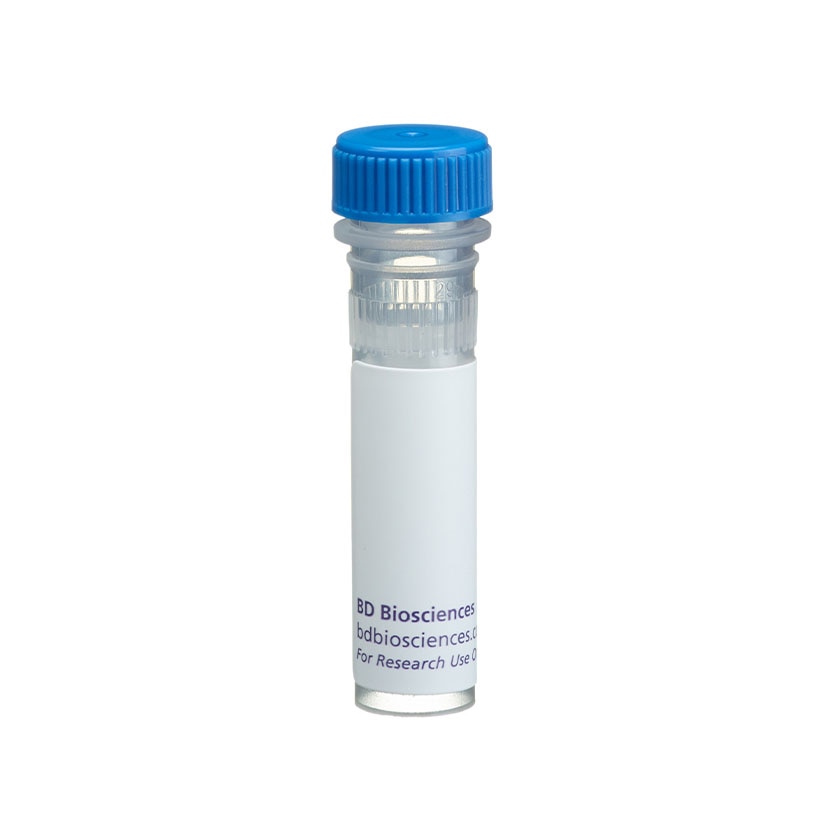-
Reagents
- Flow Cytometry Reagents
-
Western Blotting and Molecular Reagents
- Immunoassay Reagents
-
Single-Cell Multiomics Reagents
- BD® OMICS-Guard Sample Preservation Buffer
- BD® AbSeq Assay
- BD® Single-Cell Multiplexing Kit
- BD Rhapsody™ ATAC-Seq Assays
- BD Rhapsody™ Whole Transcriptome Analysis (WTA) Amplification Kit
- BD Rhapsody™ TCR/BCR Next Multiomic Assays
- BD Rhapsody™ Targeted mRNA Kits
- BD Rhapsody™ Accessory Kits
- BD® OMICS-One Protein Panels
- BD OMICS-One™ WTA Next Assay
-
Functional Assays
-
Microscopy and Imaging Reagents
-
Cell Preparation and Separation Reagents
Old Browser
This page has been recently translated and is available in French now.
Looks like you're visiting us from {countryName}.
Would you like to stay on the current location site or be switched to your location?
BD Pharmingen™ Purified Mouse Anti-Tie2
Clone 33 (also known as MoAb33; Ab33) (RUO)




Western blot analysis for Tie2. Human endothelial cell lysates were probed with the mouse anti-Tie2 antibody at concentrations of 4 µg/mL (lane 1), 2 µg/mL (lane 2), and 1 µg/mL (lane 3). Due to glycosylation, Tie2 may be observable migrating in a range between ~130-165 kDa.



Regulatory Status Legend
Any use of products other than the permitted use without the express written authorization of Becton, Dickinson and Company is strictly prohibited.
Preparation And Storage
Product Notices
- Since applications vary, each investigator should titrate the reagent to obtain optimal results.
- Caution: Sodium azide yields highly toxic hydrazoic acid under acidic conditions. Dilute azide compounds in running water before discarding to avoid accumulation of potentially explosive deposits in plumbing.
- Please refer to www.bdbiosciences.com/us/s/resources for technical protocols.
- Please refer to http://regdocs.bd.com to access safety data sheets (SDS).
The 33 monoclonal antibody specifically recognizes Tunica interna endothelial cell kinase-2 (Tie2) which is also known as CD202b or Angiopoietin-1 receptor. Tie2 (CD202b) is a single-pass type I membrane protein that is encoded by TEK (TEK receptor tyrosine kinase) which belongs to the receptor tyrosine kinase (RTK) family. The extracellular region of Tie2 (CD202b) contains an N-terminal IgC2-like domain followed by three EGF-like domains, an additional IgC2-like domain and three fibronectin type III domains. The intracellular region contains a protein kinase domain. TIE receptors, designated Tie1 and Tie2 (Tek) have a tissue distribution which is limited primarily to cells of endothelial origin. Binding of angiopoietin 1 to Tie2 (CD202b) leads to downstream receptor-mediated signaling that is involved in angiopoiesis and survival of endothelial cells. Tie2 has been shown to be required for the normal development of vascular structures during embryogenesis. It has also been demonstrated to play a role in normal and pathological angiogenesis in adults. Mutations in the TEK gene cause multiple cutaneous and mucosal venous malformations (VMCM). Tie2 has a predicted molecular weight of 126 kD, but may be observable at ~130-165 kDa. This antibody has been reported to recognize human and mouse Tie2 but not Tie1.
Development References (4)
-
Dumont DJ, Gradwohl G, Fong GH, et al. Dominant-negative and targeted null mutations in the endothelial receptor tyrosine kinase, tek, reveal a critical role in vasculogenesis of the embryo. Genes Dev. 1994; 8(16):1897-1909. (Biology). View Reference
-
Partanen J, Dumont DJ. Functions of Tie1 and Tie2 receptor tyrosine kinases in vascular development. Curr Top Microbiol Immunol. 1999; 237:159-172. (Biology). View Reference
-
Peters KG, Coogan A, Berry D, et al. Expression of Tie2/Tek in breast tumour vasculature provides a new marker for evaluation of tumour angiogenesis. Br J Cancer. 1998; 77(1):51-56. (Immunogen: Immunohistochemistry, Western blot). View Reference
-
Wong AL, Haroon ZA, Werner S, Dewhirst MW, Greenberg CS, Peters KG. Tie2 expression and phosphorylation in angiogenic and quiescent adult tissues. Circ Res. 1997; 81(4):567-574. (Biology: Immunohistochemistry, Western blot). View Reference
Please refer to Support Documents for Quality Certificates
Global - Refer to manufacturer's instructions for use and related User Manuals and Technical data sheets before using this products as described
Comparisons, where applicable, are made against older BD Technology, manual methods or are general performance claims. Comparisons are not made against non-BD technologies, unless otherwise noted.
For Research Use Only. Not for use in diagnostic or therapeutic procedures.
